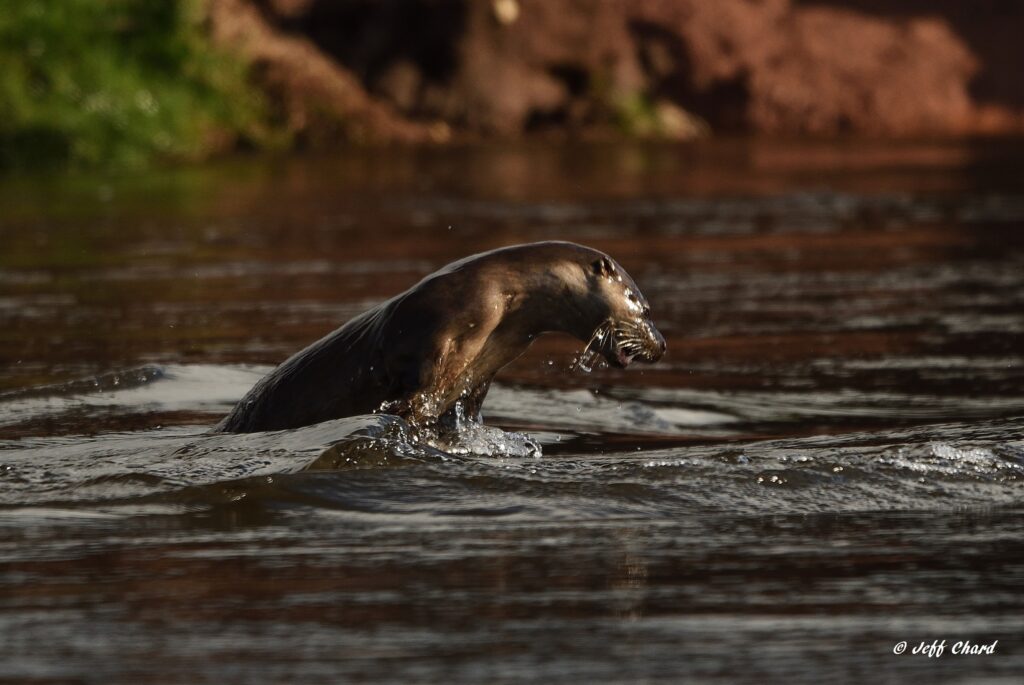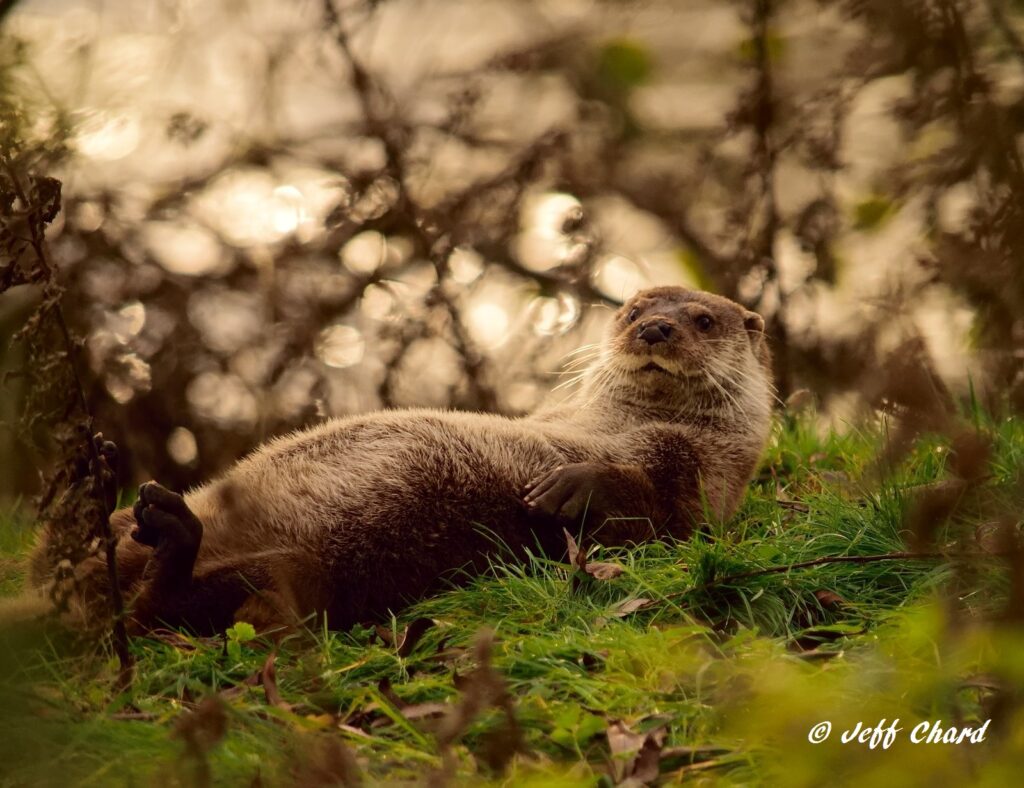Eurasian Otter Overview
One of 13 species of otter worldwide, the Eurasian Otter, also known as the European Otter, has existed on the UK land mass since the last Ice Age some 11,000 years ago. Evidence shows that it could be found across its territory, Europe, and Asia, over millions of years.
The Eurasian Otter (scientific name Lutra Lutra) is a semi aquatic, carnivorous mammal and is a member of the Mustelid or weasel family, which also includes weasels, stoats, polecats, pine martens, mink and badgers. Like other mustelids, they are long and slender, with dark brown fur on the upper body and a creamy bib running from beneath its jaw along its abdomen.
From their nose to the tip of its tail, an adult otter can grow to 1 to 1.3 metres on average, the tail being about one third of its full length. They can weigh between 7 to 12 k, depending on abundance of food in their territory. Their diet is approximately 80% fish and being opportunistic feeders, they will take small mammals, birds, crustaceans, molluscs and even amphibians.
Eurasian Otters can breed at any time of year and have 2 or 3 cubs, although 4 or 5 are not unheard of. Their gestation period is around 60 to 65 days and when born, the cubs have downy fur, and their eyes stay closed for approximately 5 weeks. They stay in a maternity or natal holt for approximately 12 weeks and as they are not born natural swimmers, their mother will force them into water to learn to swim. They will stay with their mother for up to 15 months and are able to breed a few months later.
Otters have acute senses of smell, hearing and eyesight. Their nose, ears and eyes are in line, high on the head, so they can remain alert whilst the rest of the body is submerged. They communicate via whistles, twittering, and chattering noises and spitting sounds, which can be heard at night when it is quiet and still or when young cubs are hunting with their mother.
After leaving their mother, the young adult otters need to establish their own territory and if they fail to do so, they will likely perish. Once a territory is established, they will live in cavities called holts, generally in riverbanks but, these can be found in hollows beneath trees, in man-made structures in fact, almost anywhere that the otter might feel safe and protected. An otter will have numerous holts and resting places in its territory.
Otters have 5 webbed toes and powerful limbs, making them strong swimmers, swimming at speeds up to 6 miles per hour. However, they are unable to hold their breath underwater for more than 30 to 40 seconds at a time. After swimming and frequent diving, they must leave the water to groom their fur, to keep it as waterproof as possible.
Although the Eurasian Otter population has recovered since the 1970s and can now be found in our South Wales waterways and beyond, otters live for only 4 years, on average.


